In the pharmaceutical manufacturing industry, the rotary tablet press machine, or rotary compression machine, stands as a cornerstone of solid dosage production. These machines are essential for producing tablets efficiently and consistently, meeting the high standards required by regulatory bodies such as the FDA and EMA. Whether you're producing generic drugs at scale or developing innovative formulations, rotary tablet presses play a crucial role in ensuring consistent tablet quality, production speed, and compliance with stringent regulations.
This article provides a detailed overview of what a rotary tablet press machine is, how it works, its key components, advantages, and how to choose the right one for your pharmaceutical operations.
A rotary tablet press machine is a mechanical device used to compress granulated or powdered materials into uniform tablets through a continuous rotary process. Unlike single-punch presses that operate intermittently, rotary tablet presses feature a rotating turret that holds multiple sets of punches and dies, allowing simultaneous filling, compression, and ejection of tablets. This design enables higher throughput and better control over tablet weight and hardness compared to traditional single-station presses.
The core advantage of rotary tablet presses lies in their ability to maintain high-speed, continuous operation while ensuring precision and repeatability. They are widely used not only in pharmaceuticals but also in industries such as nutraceuticals, food supplements, and chemical manufacturing.

ZP Series Rotary Tablet Pressing Machine
High throughput, capable of producing thousands of tablets per minute.
Precise control over tablet weight, thickness, and hardness.
Automated quality assurance systems for consistent product quality.
Durability and reliability, designed for long hours of continuous operation.
Flexibility in accommodating various formulations and tablet shapes.
Compliance with Good Manufacturing Practice (GMP) standards.
The operation of a rotary tablet press can be broken down into three main stages: powder filling, compression molding, and tablet discharge. Each stage involves specific mechanisms and processes to ensure efficient and accurate tablet production.
The first step in the tablet-making process involves filling the die cavity with the appropriate amount of powder or granules. The fill cam raises the lower punch to its maximum height, allowing powder to pour into the die. Subsequently, the volume rail adjusts the depth of the lower punch to achieve the desired fill level. Excess powder is then scraped off by the powder scraping plate, leaving a precisely measured quantity ready for compression.
Consistent powder filling is vital for tablet weight uniformity. Factors such as powder flowability, particle size, and bulk density must be carefully controlled to avoid variations.
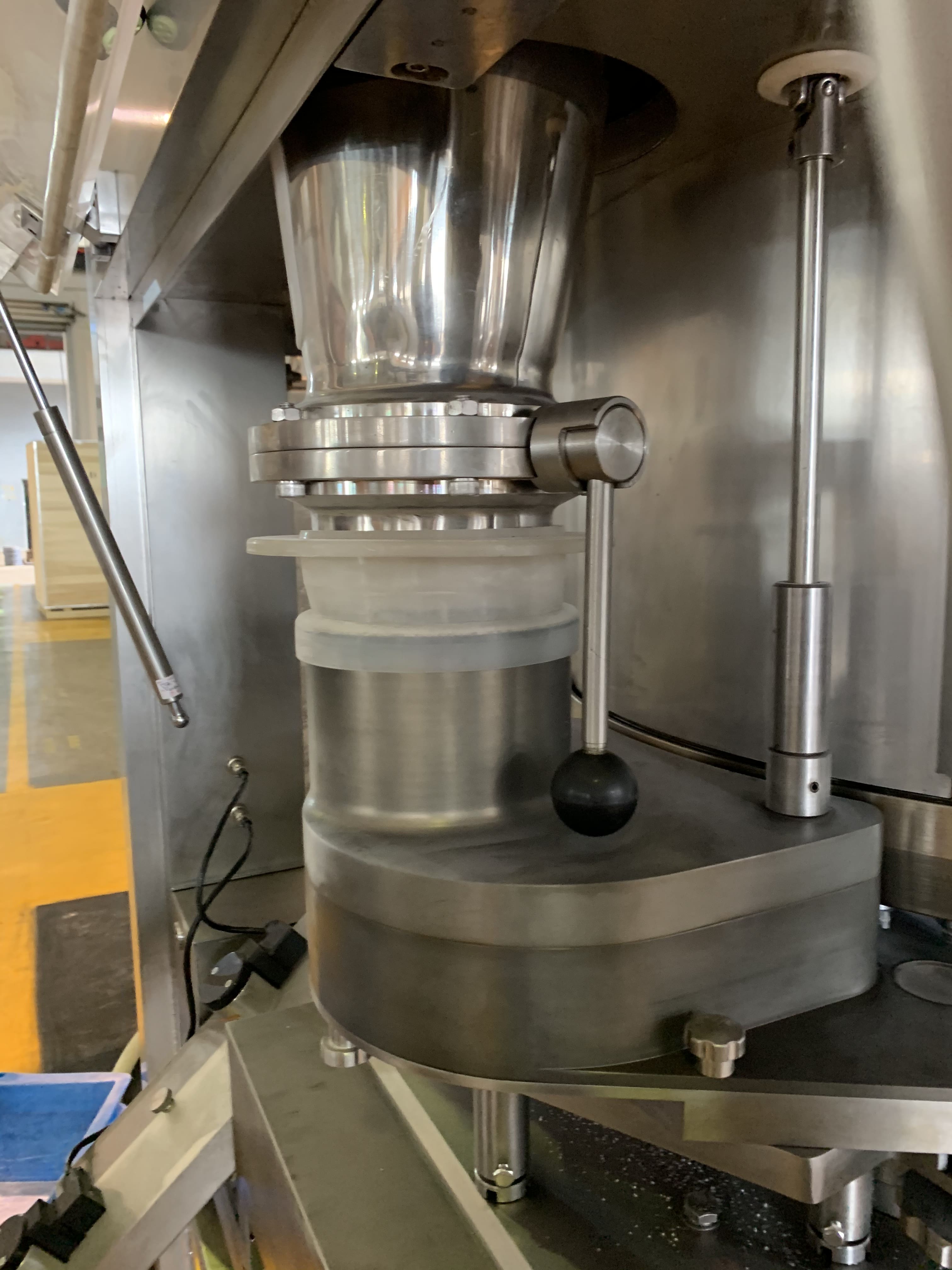
Once filled, the die moves to the compression zone where the upper and lower punches compress the powder into a solid tablet. The compression process typically includes two stages:
Pre-compression: Light initial pressure is applied to remove air pockets and begin the compaction process.
Main compression: Full pressure is exerted to form a dense, durable tablet.
During this phase, the compression force reading system continuously monitors the applied pressure. If the force deviates from the target value, the system sends feedback to adjust the volume rail accordingly, ensuring consistent tablet hardness.
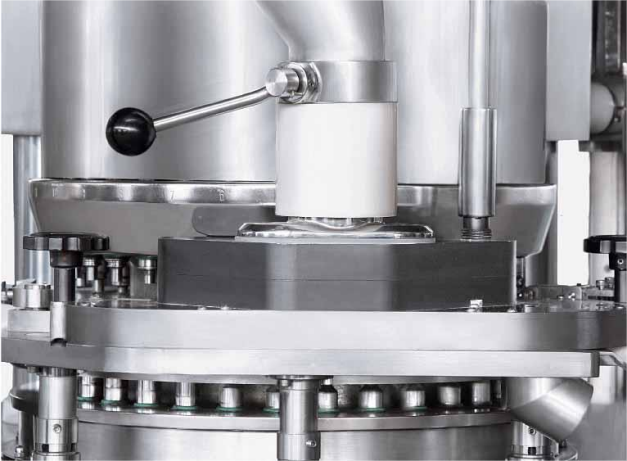
After compression, the lower punch rises to eject the finished tablet from the die. At this point, the defective tablet rejection unit inspects each tablet based on compression data. Any tablet that exceeds the preset pressure threshold is automatically removed from the output stream. This automated inspection ensures that only tablets meeting quality standards proceed to the next stage of processing or packaging.
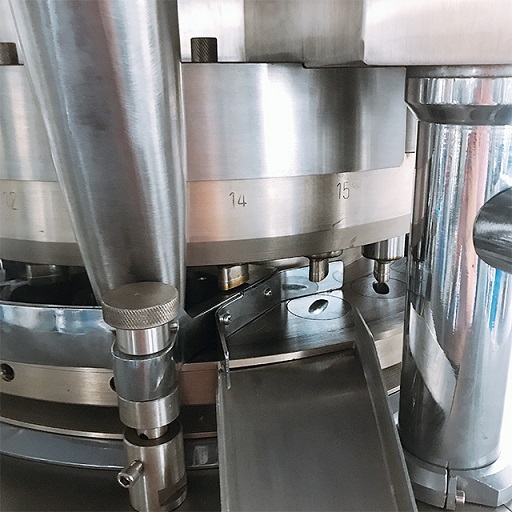
To understand how a rotary tablet press functions, it is essential to examine its major structural components. Each part plays a specific role in the overall operation and contributes to the machine’s performance and reliability.
The main shaft drive rotates the die table, which contains multiple die bores arranged in a circular pattern. A precision-engineered worm gear housed in an oil bath ensures smooth and backlash-free rotation. This design minimizes mechanical wear and enhances long-term durability.
The die table is mounted on the main shaft and rotates continuously during operation. Each die bore accommodates a pair of upper and lower punches. The number of stations (i.e., punch-die sets) varies depending on the machine model, ranging from 7 to over 60 stations.
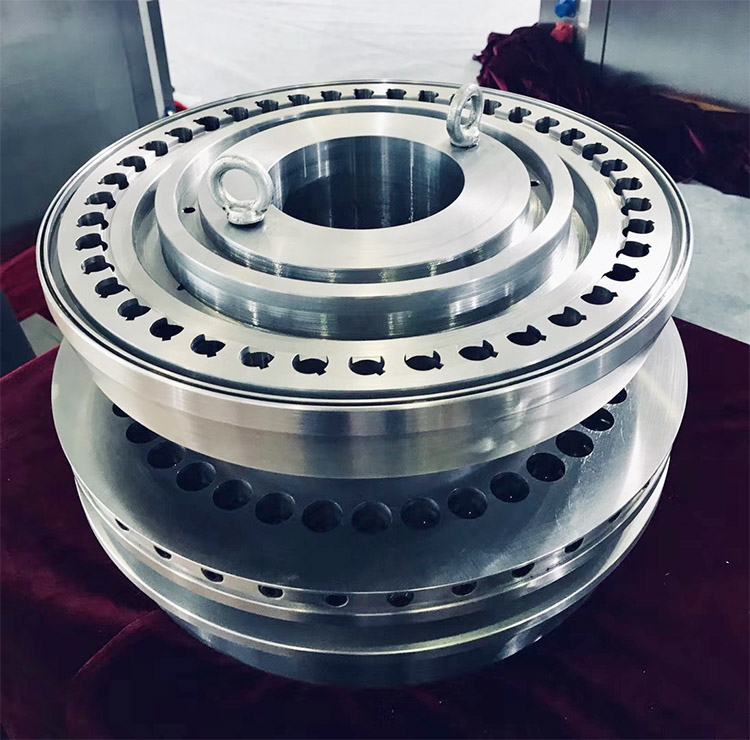
Punches move up and down within the dies under the guidance of cam tracks. During compression, the upper and lower punches pass through rollers that apply force to shape the powder into a compacted tablet. Most machines feature dual compression stages—pre-compression and main compression—to ensure uniform density and reduce capping or lamination issues.
Accurate feeding of powder or granules into the dies is crucial for maintaining tablet weight consistency. Two primary types of feeding systems are commonly used:
Powder Feed Controller (PFC): Maintains a constant volume of powder in the feed hopper by regulating the flow rate based on real-time feedback.
Induced Die Feeder (IDF): Designed to handle difficult-to-flow powders, the IDF ensures even distribution of material directly into the die cavities, reducing weight variation.
Feeding systems can be either closed-loop or recirculating, depending on the formulation characteristics.
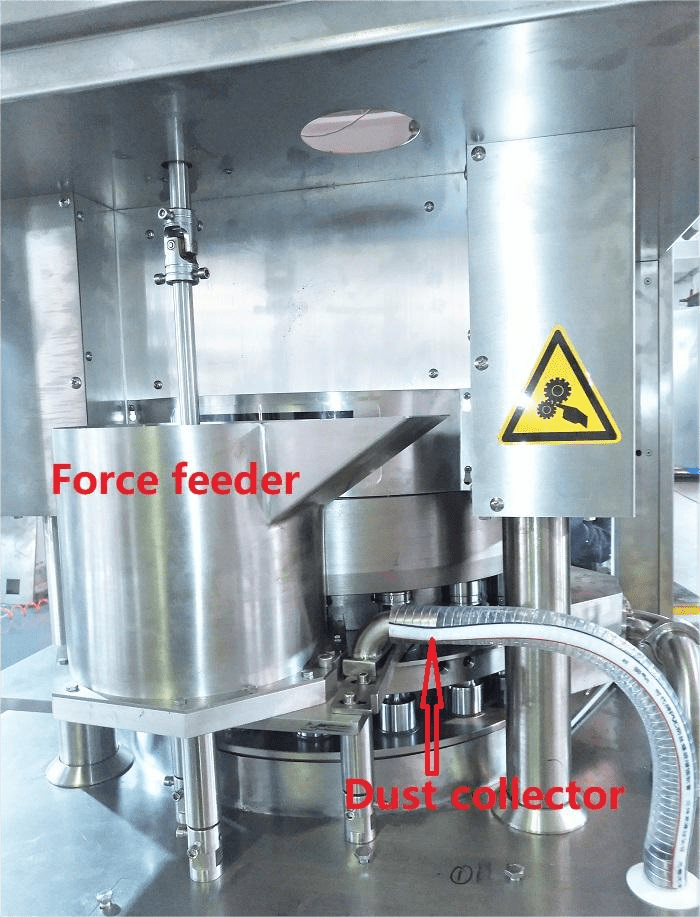
Modern rotary presses are equipped with advanced sensors that monitor compression forces in real time. This data is fed back to the control system, enabling dynamic adjustments to maintain consistent tablet hardness and reject defective units automatically.
An automatic lubrication system delivers oil to critical moving parts such as the cam tracks and punch heads. This system can be programmed for timed intervals or manually activated, ensuring minimal friction and extended component life.
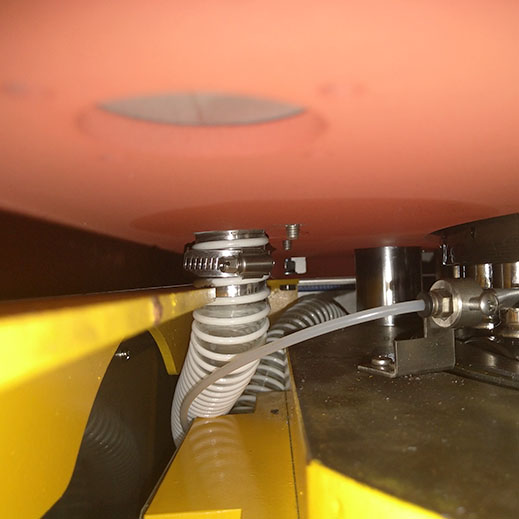
High-quality rotary presses are built with robust frames made from cast iron or steel alloys. These structures minimize vibration, enhance stability, and prolong the service life of the machine.
To prevent damage from excessive pressure, an overload release system is integrated. When the set pressure limit is exceeded, the mechanism reduces the applied force instantly, protecting both the tooling and the machine itself.
This automated unit identifies and removes tablets that fail to meet pre-set specifications. Typically triggered by the compression force monitoring system, rejection occurs during the discharge phase, ensuring only qualified tablets reach the final packaging stage.
Rotary tablet press machines are not limited to the pharmaceutical industry. Their versatility and precision make them valuable tools across a wide range of industries, including food, chemicals, healthcare products, and even laboratories and research institutions.
In the pharmaceutical sector, rotary tablet presses are used for producing various types of oral solid dosage forms:
Immediate-release tablets: Designed for rapid disintegration in the stomach.
Extended-release tablets: Formulated to release active ingredients over an extended period.
Coated tablets: Tablets with coatings that improve stability or ease of swallowing.
Effervescent tablets: Dissolve quickly in water to create a fizzy drink.
Chewable tablets: Soft and easy to chew, often used for vitamins and supplements.
Bilayer tablets: Contain two layers with different formulations, useful for combination therapies.
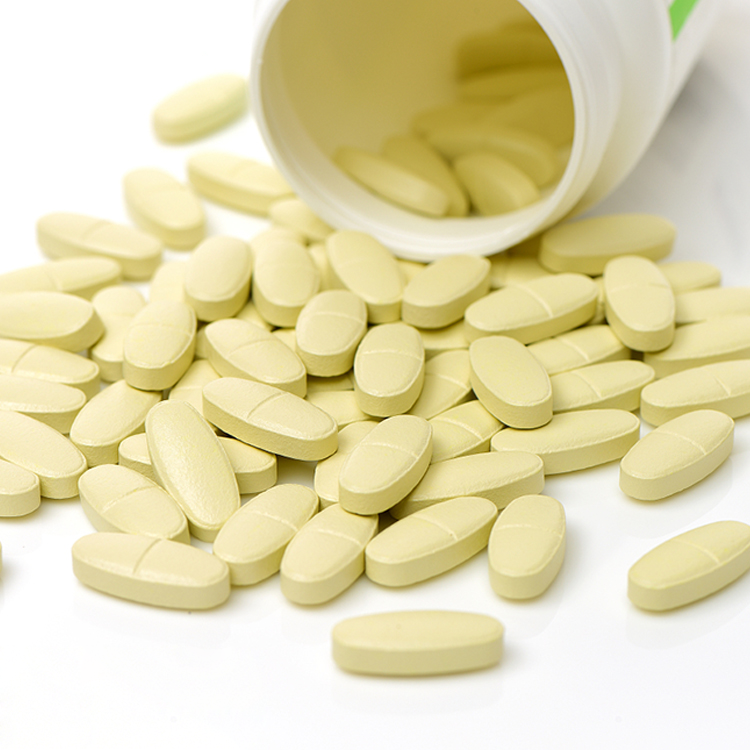
Rotary tablet presses are widely used in the food industry for manufacturing nutritional supplements, confectionery products, and functional foods:
Vitamin and mineral tablets: Ensuring precise dosing of essential nutrients.
Confectionery products: Creating candies, chocolates, and other sweet treats with uniform size and shape.
Functional foods: Producing tablets that provide specific health benefits, such as fiber supplements or probiotics.
The ability to produce consistent, high-quality tablets makes rotary presses ideal for food manufacturers who need to meet strict quality standards while maintaining high production volumes.
In the chemical industry, rotary tablet presses are utilized for producing solid dosage forms of various chemicals, catalysts, and fertilizers:
Catalysts: Used in industrial processes to accelerate reactions.
Fertilizers: Compact granules that deliver essential nutrients to plants.
Pesticides: Solid forms of pesticides for controlled release and application.
These applications require precise control over tablet weight, hardness, and dissolution rate, which rotary tablet presses can achieve efficiently.
The healthcare products industry includes a broad range of items designed to promote wellness and treat minor ailments. Rotary tablet presses play a crucial role in manufacturing these products:
Nutritional supplements: Vitamins, minerals, and herbal extracts in tablet form.
Dietary aids: Weight loss supplements, appetite suppressants, and digestive health products.
Personal care products: Toothpaste tablets, skincare supplements, and other personal hygiene items.
Rotary presses enable manufacturers to produce high-quality, consistent products that meet consumer expectations for efficacy and safety.
Research labs and academic institutions use rotary tablet presses for various purposes, including:
Formulation development: Testing new formulations for drugs, supplements, and other products.
Process optimization: Studying the effects of different compression forces, fill levels, and tooling configurations on tablet properties.
Small-scale production: Producing pilot batches for clinical trials or experimental studies.
Smaller-scale rotary presses are particularly useful in these settings because they offer flexibility and precision without requiring large production volumes.
The rotary tablet press machine is more than just a piece of equipment — it’s a critical component of a complete solid dosage solution, playing a key role in ensuring the efficiency, quality, and scalability of your pharmaceutical production line. Whether you're upgrading your current setup or building a new GMP facility, choosing the right rotary tablet press is essential to support your long-term manufacturing goals.
If you’re looking for a high-performance, reliable, and customizable rotary tablet press machine, we’re here to help. With advanced automation, real-time monitoring, and full GMP compliance, our machines are designed to meet the evolving needs of today’s pharmaceutical manufacturers.
Contact us today by info@ltpmchina.com to learn more about our rotary tablet press solutions and find the perfect fit for your production requirements.
We use cookies to enhance your browsing experience and protect your privacy. Please read our privacy policy for more information.